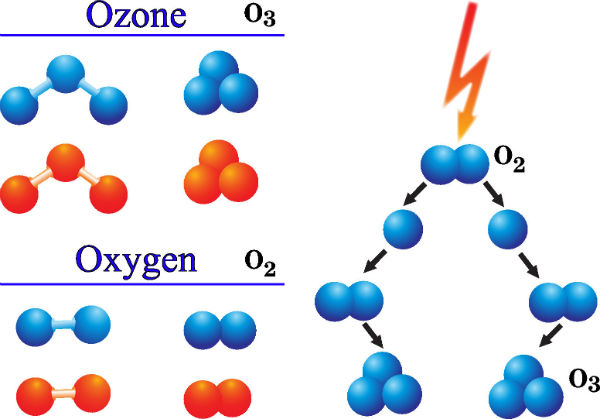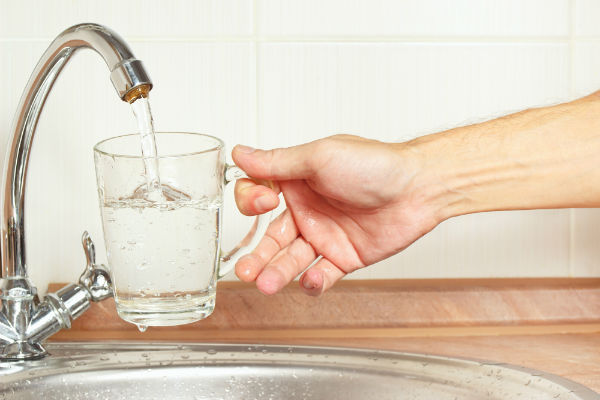How to Explain Ozone to Homeowners

2016 brought with it the final stages of development for one of Water-Right’s newest innovations – the Ozone Generator kit.
Following extensive testing and validation of this product Water-Right ramped up production of the kits, which are now available to Evolve and WaterCare dealers.
We’re excited about the opportunity this new product provides to the Clear Choice Water Group as well as the homeowners you serve. Ozone can solve a variety of household water problems in a unique way.
But first, you’ll have to make sure your customers understand what ozone is and what it can do. Paul Zachman of Zachman’s WaterCare and Water-Right Vice President, Guy Gruett, have some advice.
As Gruett explains, Water-Right’s Ozone Generator has been uniquely designed to keep things easy for both the homeowner to understand and for your technicians to install.
“What we did is we integrated it into the control valve so it could be as simple as plug-and-play. All they have to do is put the kit onto the back of the valve, and then program the back of the board to turn it on to ozone,” he says. “We’re powering it right out of the control valve to make it very simple.”
Gruett says making a simpler product meant it took a little longer to develop, but the end result will be worth the effort.
You may already have a solid understanding of ozone, but sometimes knowing too much can make it hard to simplify the process to a homeowner. Here are four areas to focus on when explaining ozone generators to your customers.
1. What Ozone Is
A lot of homeowners hear ozone and immediately think of the ozone layer, but they may not realize it’s nothing more than O3 – three oxygen atoms bound together. It is a naturally-occurring substance and even in the ozone layer, it is used to protect the Earth. Once a homeowner understands the substance is just three oxygen atoms, it’s much easier to talk about. Ozone is also known for its characteristic smell.
“Ozone is generated when lightning strikes,” Zachman explains. That’s why some people say its odor can be noticed after a thunderstorm. Guy Gruett explains how ozone smells that will be familiar to some people.
“It’s a pungent smell you get from an electric motor. Sometimes, if you’ve been around electric motors, you can smell a little odor,” he says. “Ozone is actually the Greek word for smell.”

2. What Ozone Does in Water Treatment
Water-Right’s Ozone Generators uses the Corona discharge method. An electrical charge creates the ozone out of air, much like lightning, before it’s sucked into the system through a vacuum. In it’s natural state, oxygen exists as two atoms bound together (O2). For the purpose of disinfecting water, we generate ozone (O3) so the extra oxygen atom will come in contact with contaminants like bacteria and other pathogens and oxidize them. The O3 becomes O2 – or just oxygen — while the bacteria have been killed.
Paul Zachman says a major issue in the twin cities region of Minnesota is the iron bacteria that gets trapped in iron filters.
“That is a really big problem in my area, everyone has iron bacteria to a degree, and sometimes, with the more traditional systems, you’d disassemble them after a short period of time and the head of the iron filter would just be clogged. I’m basically using it to prevent the iron bacteria from colonizing in my filtration equipment.”
Gruett says ozone is ideal for water treatment because it does not leave anything harmful behind after it disinfects the system.
“It’s a wonderful disinfectant without byproducts. Its only byproduct is oxygen, unlike chlorine, which makes a disinfection byproduct,” he says.
3. Explain the Benefits
Safety is probably the biggest benefit to using ozone for disinfection. It’s an ideal option to chlorine or potassium permanganate.
“That was my concern, having used both potassium permanganate and chlorine feeders. There’s a chance of some type of mechanical malfunction”, Zachman says.
While ozone can be toxic if too much of the gas is inhaled, it’s of no danger to the homeowner because its half life is less than 30 minutes.
“Then it fades away after that point, or expends its energy and becomes regular oxygen,” says Zachman.
Using ozone can make the homeowner’s life and your job a little easier, too. There will be no need for changing chemicals.
4. Let Them Know What to Expect

Zachman reminds users that homeowners may notice a difference in appearance when ozonated water first comes out of the faucet.
“If you look at it closely, there are lots of microscopic bubbles that make it look like there’s almost a cloud in the glass. Then these bubbles come to the top and gas off and the water is nice and clear again.”
This effect is something that happens with any type of aeration, but Zachman says it can be more noticeable with ozone. He suggests communicating with customers before they wrongly assume there’s some sort of problem.
“Most people are not bothered by it at all, as long as they know it’s going to do that,” he says. “But you’re opening the door to a lot of questions if you haven’t addressed it. I just tell them before they ask!”
Oxygen is something that helps drinking water smell and taste better. In the end, water that’s cleaner and better-tasting is what every homeowner really wants.
Do you have your own questions about ozone? Find out more information about our Ozone Generator Kits. You can also call Water-Right customer service at 1-800-777-1426, or email us, and we’ll be happy to help you out

